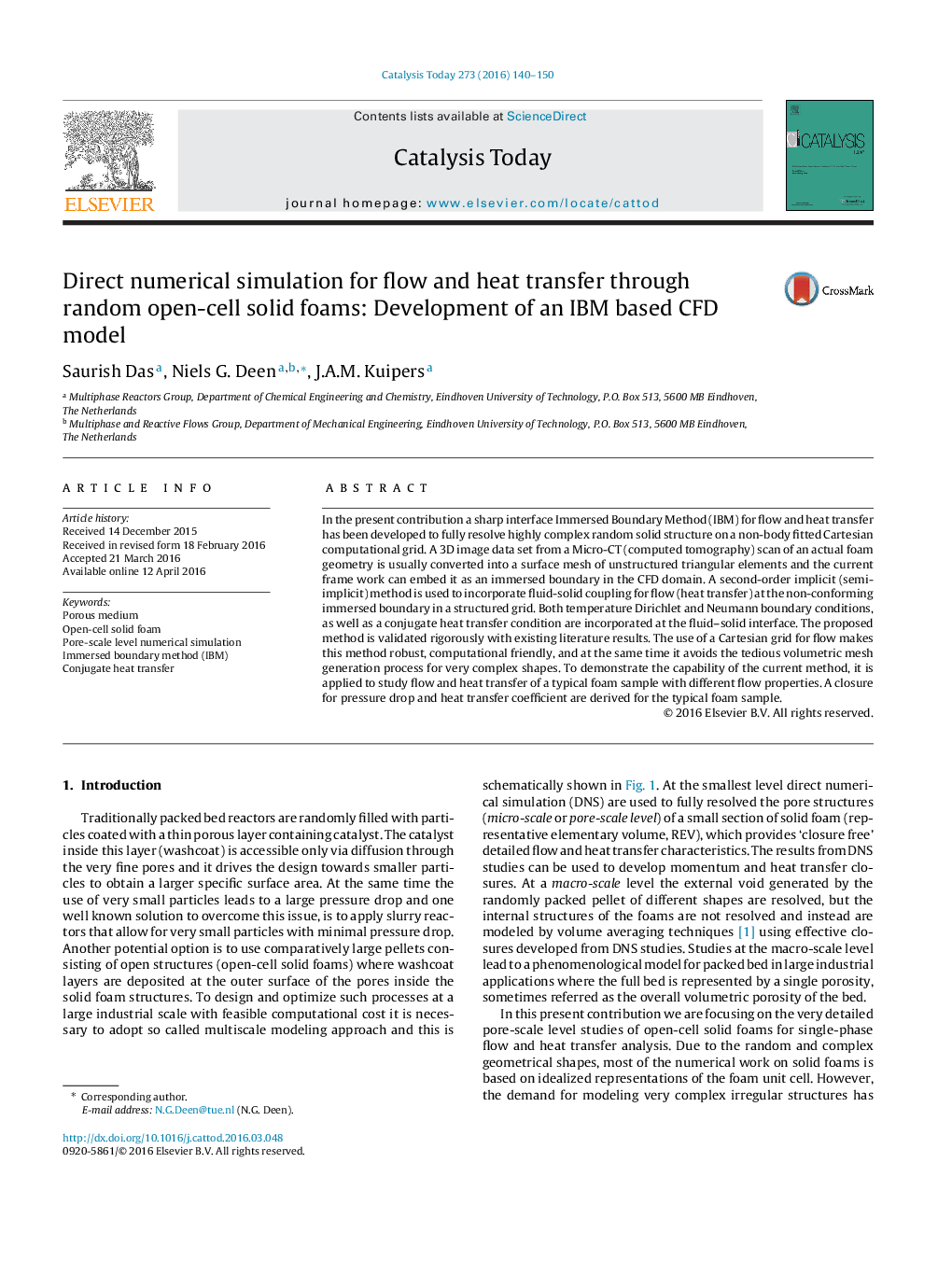| کد مقاله | کد نشریه | سال انتشار | مقاله انگلیسی | نسخه تمام متن |
|---|---|---|---|---|
| 53232 | 46955 | 2016 | 11 صفحه PDF | دانلود رایگان |

• A novel IBM based framework to fully resolve random open-cell solid foam geometry in a Cartesian computational domain.
• Accurate incorporation of temperature Neumann, Dirichlet and conjugate heat transfer conditions at the fluid-solid interface.
• Flow and heat transfer study for a typical foam sample.
In the present contribution a sharp interface Immersed Boundary Method (IBM) for flow and heat transfer has been developed to fully resolve highly complex random solid structure on a non-body fitted Cartesian computational grid. A 3D image data set from a Micro-CT (computed tomography) scan of an actual foam geometry is usually converted into a surface mesh of unstructured triangular elements and the current frame work can embed it as an immersed boundary in the CFD domain. A second-order implicit (semi-implicit) method is used to incorporate fluid-solid coupling for flow (heat transfer) at the non-conforming immersed boundary in a structured grid. Both temperature Dirichlet and Neumann boundary conditions, as well as a conjugate heat transfer condition are incorporated at the fluid–solid interface. The proposed method is validated rigorously with existing literature results. The use of a Cartesian grid for flow makes this method robust, computational friendly, and at the same time it avoids the tedious volumetric mesh generation process for very complex shapes. To demonstrate the capability of the current method, it is applied to study flow and heat transfer of a typical foam sample with different flow properties. A closure for pressure drop and heat transfer coefficient are derived for the typical foam sample.
Figure optionsDownload high-quality image (262 K)Download as PowerPoint slide
Journal: Catalysis Today - Volume 273, 15 September 2016, Pages 140–150